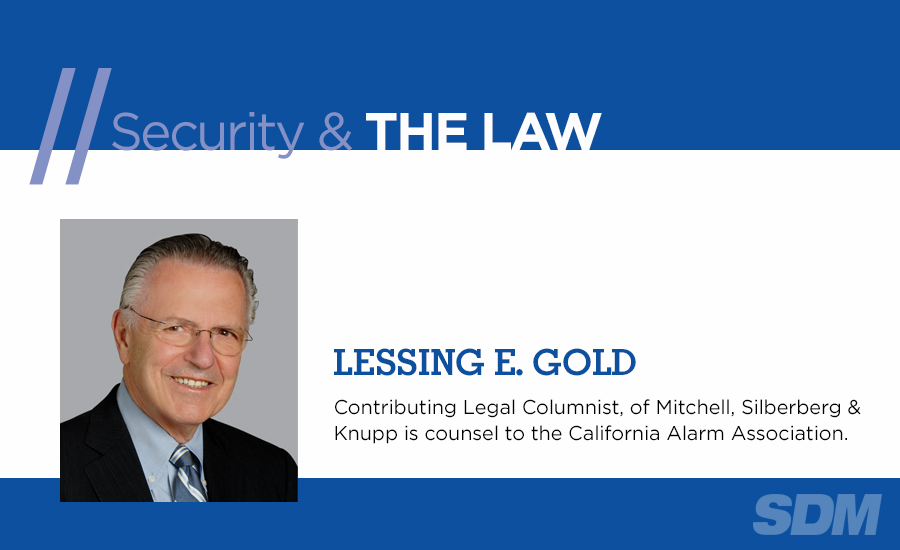Security & the Law
When are Police Dogs Unreasonable Force?

An issue recently arose in California where a police dog was used to seize and retrieve a suspect. The plaintiff fled into a thicket of bushes during a police chase. During the encounter the dog bit the plaintiff multiple times, leading to severe injuries to his arm that necessitated a series of surgeries. The plaintiff brought a lawsuit alleging that the use of the police dog was an unreasonable use of force in violation of his Fourth Amendment rights and that, as a result, the officers were liable for his injuries. The defendant officers moved for summary judgment on the grounds that the force used was reasonable and that their actions were shielded by qualified immunity. The matter came before a magistrate judge, who filed a Report and Recommendation (R&R) which recommended that the defendants’ motion be granted in part and denied in part.
The United States District Court reviewed the portions of the R&R to which objections were made and adopted in full the well-reasoned R&R.
The judge pointed out that the gist of the case is that while executing a search and arrest warrant, the defendant deputies pursued the fleeing plaintiff through a residential neighborhood and into a thicket of bushes. The plaintiff, who had fallen over a fence and struck his head prior to entering the bushes, was dazed and did not immediately respond to the deputies’ commands to exit the bushes. The deputies released the dog to retrieve the plaintiff, who crawled out of the bushes with the dog latched onto his arm. The dog continued to “bite-and-hold” after the plaintiff was within the control of the officers.
The defendants argued that summary judgment should be granted because the use of the dog was reasonable and that their actions are shielded by qualified immunity.
The judge pointed out that there is little dispute that the initial use of the dog to retrieve the plaintiff was reasonable, and the R&R recommends that summary judgment be granted in the defendants’ favor as to that initial use of force. But, according to the R&R, a reasonable jury could find that the continued use of the dog once the plaintiff complied with the officers was unreasonable and warranted the denial of summary judgment. Further, the court pointed out that based on established Ninth Circuit precedent, the R&R held that a prohibition against using a police canine on a surrendering suspect was clearly established and warranted a denial of qualified immunity to the defendants.
The court pointed out that the Ninth Circuit addressed the reasonableness of the use of police canines in a previous and similar case. In that case, the court granted the officer qualified immunity but noted: “We do not believe that a more particularized expression of the law is necessary for law enforcement officials using police dogs to understand that under some circumstances the use of such a “weapon” might become unlawful. For example, no particularized case law is necessary for a deputy to know that excessive force has been used when a deputy sics a canine on a handcuffed arrestee who has fully surrendered and is completely under control.”
The critical distinction is the degree of resistance on the part of the suspect. In the case at hand, the plaintiff had already complied with the deputies’ commands to show his hands prior to crawling out of the bushes, and there is no allegation he fought with the dog or in any way indicated that he posed a specific risk to the officers. The dog continued the bite-and-hold until well after the plaintiff had exited the bushes, it was clear he was unarmed and he was within the officers’ control.
The court established that the reasonable use of a police dog to locate or subdue a suspect becomes unreasonable once that suspect has indicated they are surrendering and otherwise pose no safety risk to the officers. Therefore, the R&R was adopted in full.
READERS ASK
Q: In your articles you frequently refer to the issuance of a summary judgment. What is a summary judgment?
A: I refer you to a decision by the court: “A summary judgment is appropriate when the moving party can show that there is no genuine issue as to any material fact and therefore the moving party is entitled to a judgment as a matter of law.” In short, if a plaintiff files a lawsuit and the defendant can show there is no evidence supporting at least one essential element of the plaintiff’s claim, then the court will issue a summary judgment, which essentially will dismiss the plaintiff’s lawsuit without a trial.
Looking for a reprint of this article?
From high-res PDFs to custom plaques, order your copy today!





